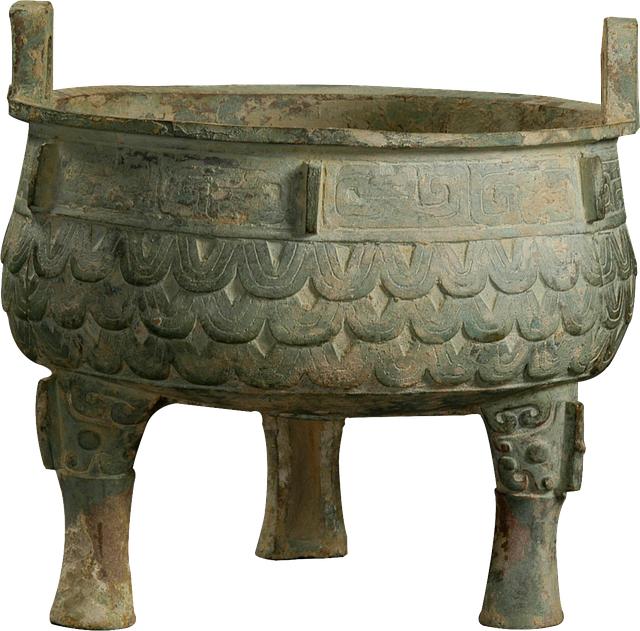Discovery of Severed Skulls Sheds Gentle on Iron Age Rituals in Spain
Latest archaeological discoveries in spain have unveiled severed skulls that present invaluable insights into the ritualistic practices of the Iron Age. These findings, primarily excavated from websites believed to be ceremonial facilities, recommend that the so-called “nailed-head ritual” was way more intricate than beforehand understood. Proof signifies that these rituals not solely concerned decapitation but additionally a fancy interaction of symbolic gestures and communal engagement. Researchers have noticed that the positioning and remedy of the skulls reveal a deliberate effort to convey messages about energy, status, and probably even ancestral veneration inside Iron Age communities.
Among the many notable artifacts recovered alongside the skulls have been objects that spotlight the sophistication of those rituals. These embrace:
ornamental nails: Discovered embedded within the skulls, suggesting a connection to the deceased’s standing.Pottery fragments: Indicating food and drinks choices throughout the rituals.Animal stays: Which can have been a part of sacrificial practices to honour the deceased.
The next desk summarizes the important thing parts recognized within the ritualistic context:
FindingSignificanceSevered SkullsIndicate ritualistic decapitation and cultic practices.Ornamental NailsRepresent standing or honors bestowed upon the deceased.PotteryPoints to choices made, suggesting communal feasting.Animal RemainsPossible sacrificial parts for appeasing spirits.
As researchers proceed to analyse these findings, they’re reshaping our understanding of the social and cultural dynamics that characterised Iron Age societies in Spain, illustrating a wealthy tapestry of beliefs and practices that resonate via the ages.
Complexities of the Nailed-Head Ritual: New Insights from Archaeological Findings

The current archaeological findings surrounding the nailed-head ritual in Iron Age Spain have unveiled a much more intricate image than beforehand understood. for years, this macabre customized was interpreted as merely a type of ritual sacrifice; nonetheless, new proof suggests it could have carried deeper societal implications. The invention of severed skulls adorned with nails signifies a fancy interaction between faith, standing, and maybe even warfare among the many historical Iberian tribes. Researchers now suggest that these rituals could have served numerous features, together with:
End result of Energy: Symbolizing the conquer enemies or rival factions.Spiritual Significance: Appearing as a method of appeasing deities or ancestors.Social Cohesion: Reinforcing group bonds via shared practices.
Analyzing the spatial distribution of those artifacts has additionally supplied deeper insights into their cultural significance. For instance, excavations reveal patterns that recommend ritual websites have been steadily sufficient strategically situated close to areas of battle or boundary traces between tribes. Formulating a transparent understanding of those areas provides one other layer of which means to the ritual, highlighting its potential position in:
Territorial Markers: Signifying land possession or management.Neighborhood Id: Reinforcing group id amidst exterior threats.
Cultural Significance of the Ritual: Understanding Beliefs and Practices

The ‘nailed-head ritual’ in Iron Age Spain unveils a wealthy tapestry of cultural practices deeply rooted within the societies of that period. This fascinating process, which concerned the severing and typically show of human skulls, suggests greater than mere barbarism; it displays a fancy perception system and social construction. Researchers have unearthed proof indicating that these rituals seemingly served a number of features,together with:
Ancestor worship: The show of skulls could have been a manner for communities to honor their ancestors,reinforcing kinship ties and cultural id.Ritualistic Choices: These practices could have included choices to deities or spirits, with the assumption that such acts would guarantee prosperity or safety for the residing.Demonstration of Energy: The ritual may have functioned as a method of asserting dominance over rival teams, showcasing each bodily prowess and the group’s capacity to manage life and demise.
Additional evaluation of the stays has revealed variations within the methodology and context of those rituals, hinting at a nuanced custom that advanced over time. Investigations into burial websites related to these practices reveal variations in:
Most important PurposeArchaeological EvidenceReligious Significanceskulls present in ceremonial contexts,adorned with choices.Social IdentitySkulls indicating standing have been positioned in distinguished areas.Mortuary PracticesVariation within the remedy of stays suggests differing customs.
This proof means that the ‘nailed-head ritual’ encapsulated numerous dimensions of life in Iron Age Spain, illustrating how far eliminated this society was from simplistic interpretations of their customs. by dissecting these intricate beliefs and practices, students can respect the depth of human expertise and connection that transcends time.
Implications for Future Analysis: The place Do We Go from Right here?

As archaeological findings proceed to reshape our understanding of historical practices, the implications of the brand new insights relating to the ‘nailed-head ritual’ in Iron Age Spain recommend quite a few avenues for future investigation. Researchers are inspired to think about a multi-disciplinary method, drawing from numerous fields equivalent to anthropology, archaeology, and forensic science to deepen our understanding of ritualistic practices. This method may result in discoveries in areas like:
Technological improvements: Inspecting the instruments and strategies utilized in these rituals may reveal superior methods of the time.Cultural exchanges: Analyzing burial customs in relation to neighboring cultures could point out shared rituals or influences.Social constructions: Investigating how these rituals formed group dynamics and hierarchies inside Iron Age societies.
Furthermore, the severed skulls make clear potential variations in ritualistic follow throughout completely different areas. This warrants a comparative evaluation of comparable findings throughout the Iberian Peninsula, with the purpose of making a whole map of ritualistic evolution. Future research may deal with:
RegionTypical PracticesPotential InnovationsNorthwestern SpainBody modificationsUse of intricate toolsCentral iberiaSkull removals with ceremonial contextsPossibility of formality significance associated to ancestorsSouthern SpainBurials with grave goodsVariants of head severance
Such investigations bear the potential to not solely enrich our understanding of Iron Age rituals but additionally to disclose vital insights into the sociopolitical landscapes of the time, thereby unearthing the complexities of human behaviors and beliefs which have endured via the ages.
Comparative Evaluation: Related Rituals Throughout Completely different Cultures

The just lately uncovered particulars surrounding the ‘nailed-head ritual’ in Iron Age Spain beckon a deeper exploration into comparable practices worldwide, hinting at shared human behaviors transcending geographical boundaries. Throughout completely different cultures, ritualistic practices involving the remedy of human stays usually mirror a society’s beliefs about demise, the afterlife, and the character of existence. As an illustration, in historical Egypt, the flowery technique of mummification and burial rites underscored the reverence for all times after demise, showcasing a fancy engagement with the thought of immortality. Equally,ritual cranium therapies among the many historical Maya,equivalent to cranial shaping,categorical profound societal significance,indicating standing or spiritual adherence,thereby revealing a common must grapple with mortality.
The evaluation of those parallels uncovers recurring themes that bridge cultural divides. Some noteworthy similarities embrace:
Reverence for the Lifeless: Many cultures have interaction in practices that honor and keep in mind their deceased, steadily sufficient involving burial rituals or choices.Transformation of the Physique: Whether or not via mummification, decapitation, or cranial shaping, manipulating the physique autopsy serves different social or non secular functions.Symbolic Use of Objects: Instruments or choices utilized in these rituals usually serve to speak between realms, whether or not to appease the spirits or to information the deceased.
These shared practices emphasize a collective human expertise rooted in ritual observance, illustrating how disparate societies interpret and ritualize the complexities of life and demise.
CultureRitual PracticePurposeIron age SpainNailed-head RitualSpiritual and societal significance relating to deathAncient EgyptMummificationPreparation for the afterlifeAncient MayaCranial ShapingIndication of social standing and id
Preservation and Presentation: Safeguarding Iron Age Artifacts for Schooling

The research of iron Age artifacts, significantly these related to elaborate rituals such because the just lately examined ‘nailed-head ritual’ in Spain, underscores the importance of preserving these relics for instructional functions. Researchers have uncovered severed skulls that point out a extra intricate cultural follow than beforehand believed, saluting the relevance of defending these finds. Preservation efforts make sure that we keep the integrity of the archaeological website whereas permitting students to investigate and interpret these artifacts for future generations. Among the many vital steps on this endeavor are:
Managed Environment: Sustaining optimum temperature and humidity ranges to stop deterioration.Documentation: Recording particulars about every discover, together with context and situation.Coaching volunteers: Equipping area people members with information about artifact care and restoration.
Presenting these historical treasures to the general public enriches cultural appreciation and fosters a deeper understanding of historical societies. museums, together with instructional establishments, play an important position on this effort, crafting exhibitions that thoughtfully illustrate the findings and their implications. Through the use of interactive shows, video displays, and guided excursions, they intention to have interaction guests and spark curiosity. A possible format for a museum exhibit on Iron Age Spain may embrace:
Exhibit ElementDescriptionArtifact DisplayShowcase of skulls and instruments discovered at excavation websites.digital Actuality ExperienceImmersive simulation of Iron Age rituals primarily based on analysis information.workshopsHands-on classes to study historical crafting methods.
In Retrospect
the findings surrounding the ‘nailed-head ritual’ in Iron Age Spain problem our beforehand simplistic understanding of those historical practices. The evaluation of severed skulls has unveiled not solely the intricate nature of the rituals but additionally their significance inside the socio-cultural panorama of the time. As researchers proceed to delve into the complexities of early Iberian societies, it turns into clear that these rituals performed an important position of their non secular and communal lives. the revelation that such practices have been embedded in a wealthy tapestry of perception and custom underscores the significance of frequently re-evaluating our archaeological interpretations. As extra proof surfaces, the story of Iron Age Spain grows ever extra intricate, inviting each students and fanatics alike to rethink what we find out about these fascinating cultures.The evolution of our understanding emphasizes the necessity for ongoing analysis and discourse within the area of archaeology, guaranteeing that the voices of the previous are heard and appreciated with the depth they deserve.
Source link : https://europ.info/2025/02/25/spain/nailed-head-ritual-in-iron-age-spain-was-more-complex-than-initially-thought-severed-skulls-reveal-livescience-com/
Creator : Noah Rodriguez
Publish date : 2025-02-25 09:26:00
Copyright for syndicated content material belongs to the linked Source.


